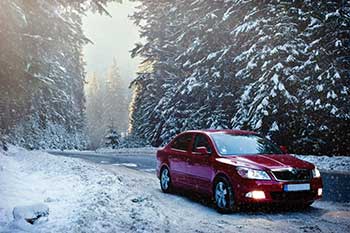
Magnuson Lowell Blog
Each week we post a blog about relevant legal issues. Glance through our various topics to learn more about a particular legal situation.
These articles are for limited informational purposes only and are not, nor are they intended to be, legal advice. You should not rely on this information for your case and should consult with an attorney for advice regarding your individual situation.
Most Recent Posts ...
Posted on: 4/15/2024
Posted on: 4/8/2024
Posted on: 4/1/2024
Posted on: 3/25/2024
Search All Blog Posts
Blog Post Archive Categories
- Options for Dealing with Real Estate in Your Washington State Divorce
- Mandatory Arbitration - A Great Choice for Small Car Accidents
- Does it Matter that I was Hurt Before My Car Accident?
- Parenting Limitations under RCW 26.09.191 in Washington State
- Navigating Child Custody: A Guide for Parents in Divorce
- Determining Child Support in Washington State
- (Redmond/Criminal Defense) Time Matters for a DUI
- (Redmond/Criminal Defense) Field Sobriety Tests - What Not to Do
- (Redmond/Criminal Defense) - The (Redmond/Criminal Defense) - The Ability to Remain Silent
- Battling Father Time: Crafting Your Legacy with Precision
- Tips for Talking to Your Family About Your Estate Plan
- How to Choose Your Personal Representative for your Will
- Little Known Washington Driving Laws
- What`s the Deal with Prenuptial Agreements?
- What Happens If I`m Bit by a Dog in Washington?
- Divorce Timelines in Washington State
- Co-Parenting 101: Tips for Co-Parenting During a Divorce
- Navigating Infidelity and Divorce Proceedings
- Why Expediency is Important After Your Car Accident
- Understanding Independent Medical Examinations (IMEs) in Washington State
- It only takes 3 seconds...
- Gotta love our court system!
- (Redmond/Crazy Lawsuit) The Walking Dead: or Not!
- (Redmond/Crazy Lawsuit) Here Comes Football - and Litigation
- What is a Contingency Fee?
- Happy New Year 2024!
- Pedestrian & Bicyclist Accidents
- Top 10 Tips You Need To Know Before Getting On A Motorcycle
- Top 10 Tips Riders Need To Know Before Getting On A Motorcycle
- In a Car Collision...Now What?
- Know your vehicle – Is your car AWD or 4WD? Do you have antilock brakes or other safety oriented onboard technology? Are you driving a big, heavy SUV or a light sedan? All these considerations are important before hitting the road. If your vehicle is well-suited for winter weather, your ability to drive safely is surely increased.
- Check your tires – Different types of tires have different jobs. If you’re heading to the mountains, perhaps investing in studded tires is a necessary move. Otherwise, consider purchasing tires specifically suited to handle ice and grip the road. And, most importantly, regardless of the tires you have, make sure the tires are up to the job. Tires with worn tread or inflation issues more readily lead to winter collisions.
- Have the right tools for the job – Do you own tire chains? Do you know how to put the chains you do own on your tires? Do you need sand or cat litter readily available? Is your trunk full of blankets, jumper cables, flash lights, flares, and other safety devices? You don’t regret being unprepared until you’re stuck on the side of the road without the necessary tools. Making a winter checklist is a great idea to make sure you fill your car before the snow starts.
- Drive slowly and carefully – Your vehicle is harder to control and more prone to slipping. As Isaac Newton stated, objects at motion stay at motion, and when you’re driving on ice it’s even more likely that your car will stay at motion even if the brakes are applied. The faster you drive in icy conditions, the more likely it is that your tires will lose traction when braking or cornering.
- Know Your Antilock Brakes – If your wheels lose control, you might feel the antilock brake system kick in while you attempt to slow down. If you have antilock brakes, apply firm and continuous pressure to the brakes. Without antilock brakes, pumping your brakes may be necessary if you feel your wheels locking up.
- Keep a safe distance – The snow can prevent your car from braking and stopping as anticipated. One of the most common car accident situations arises when a driver fails to leave sufficient space behind the next closest vehicle. As you can imagine, rear-end auto accidents are quite common when a car loses traction too close to another driver.
Six Winter Driving Tips for Washington Drivers

Many Washingtonians love living in the Pacific Northwest because of the easy-going weather. National attention is typically paid to our rainy season, but the beautiful summers and mild winters allow for yearlong outside activity. Unfortunately, when the inclement winter weather arrives, many Washington drivers are unprepared to deal with the falling snow and icy roads. Of course, unlike many locales, the greater Seattle metro area is brimming with hills and other road conditions unsuitable for winter driving. Mix the difficult terrain with inexperienced winter drivers and there is a potent combination that inevitably leads to car accidents.
Even if you are an experienced driver, Washington’s laws regarding car accidents do not take into account the snow and ice if you happen to cause a motor vehicle collision. Unless an emergency situation is created due to no fault of your own – a difficult burden to meet – drivers are held to nearly the same standards as if they were driving on a bright summer day. To be held liable for causing an accident, you must be negligent. And, even if a nasty ice patch ultimately led to your car accident, a driver’s failure to drive carefully, take proper precautions, or perhaps avoiding driving all-together, may lead to civil liability in a liability insurance claim or personal injury lawsuit.
When its snowy and icy, it may be best to avoid the roads completely. If you need to drive, always take the proper precautions. Here are a few tips to make sure your snowy drive remains a winter wonderland:
Washington drivers have a duty to take the proper precautions in order to avoid causing a car accident. These tips can help you drive more safely in the ice and snow. Regardless of your preparedness, you can never account for other drivers’ behavior. At the law office of Magnuson Lowell P.S., we’ve helped families throughout Washington after they’ve been injured in a wintery car accident, and our experienced attorneys will fight for your best interests. Call today for a free consultation (425)885-7500.




